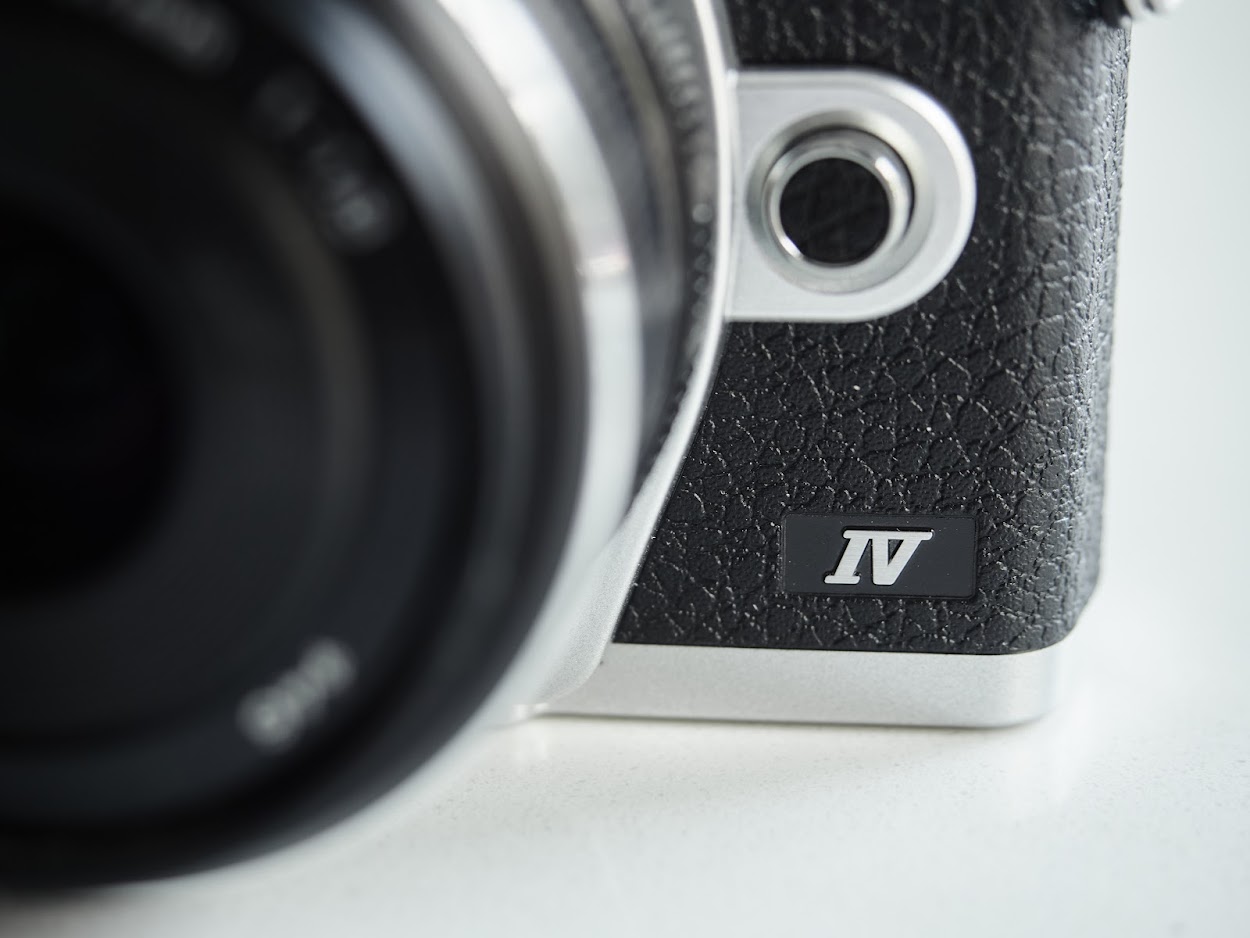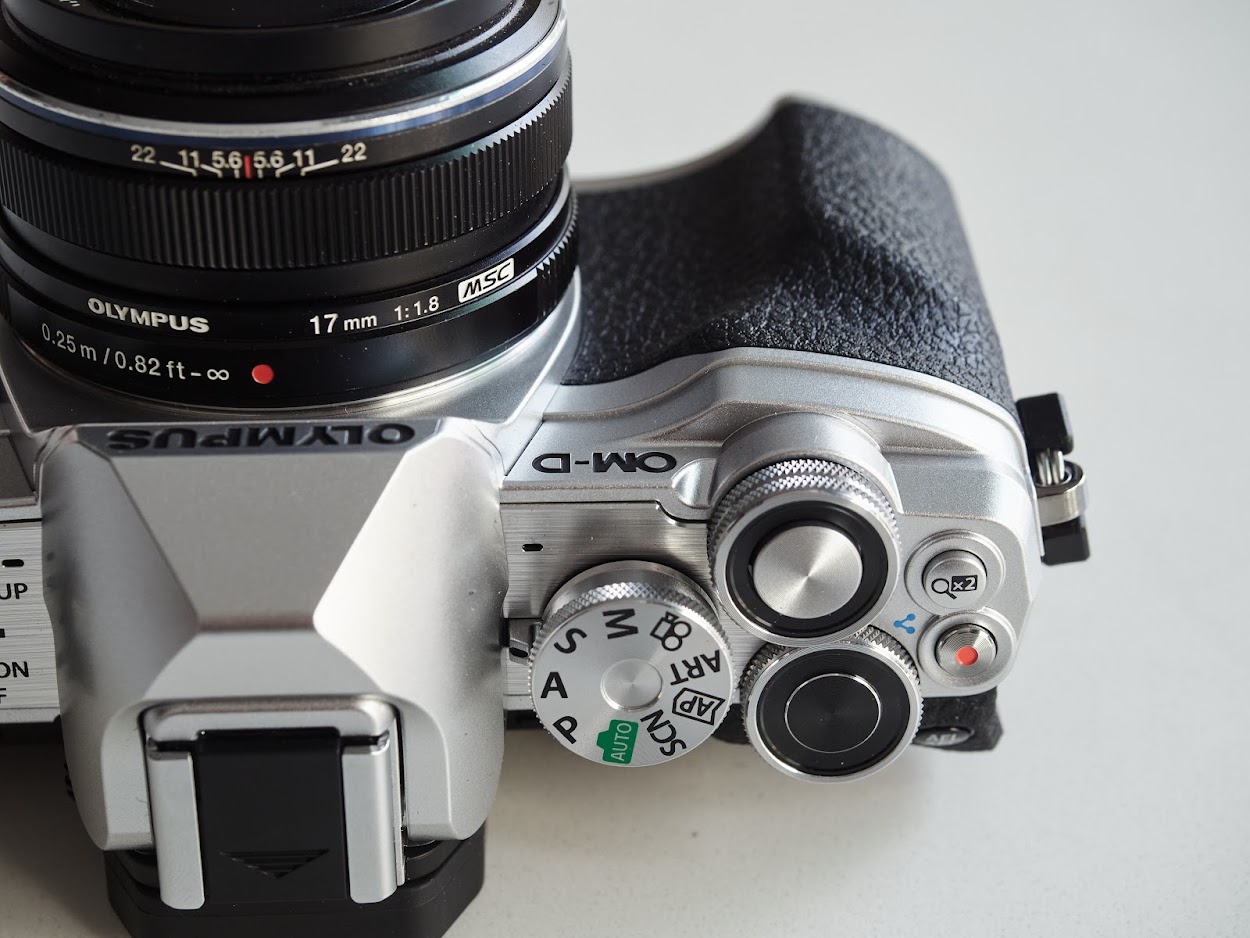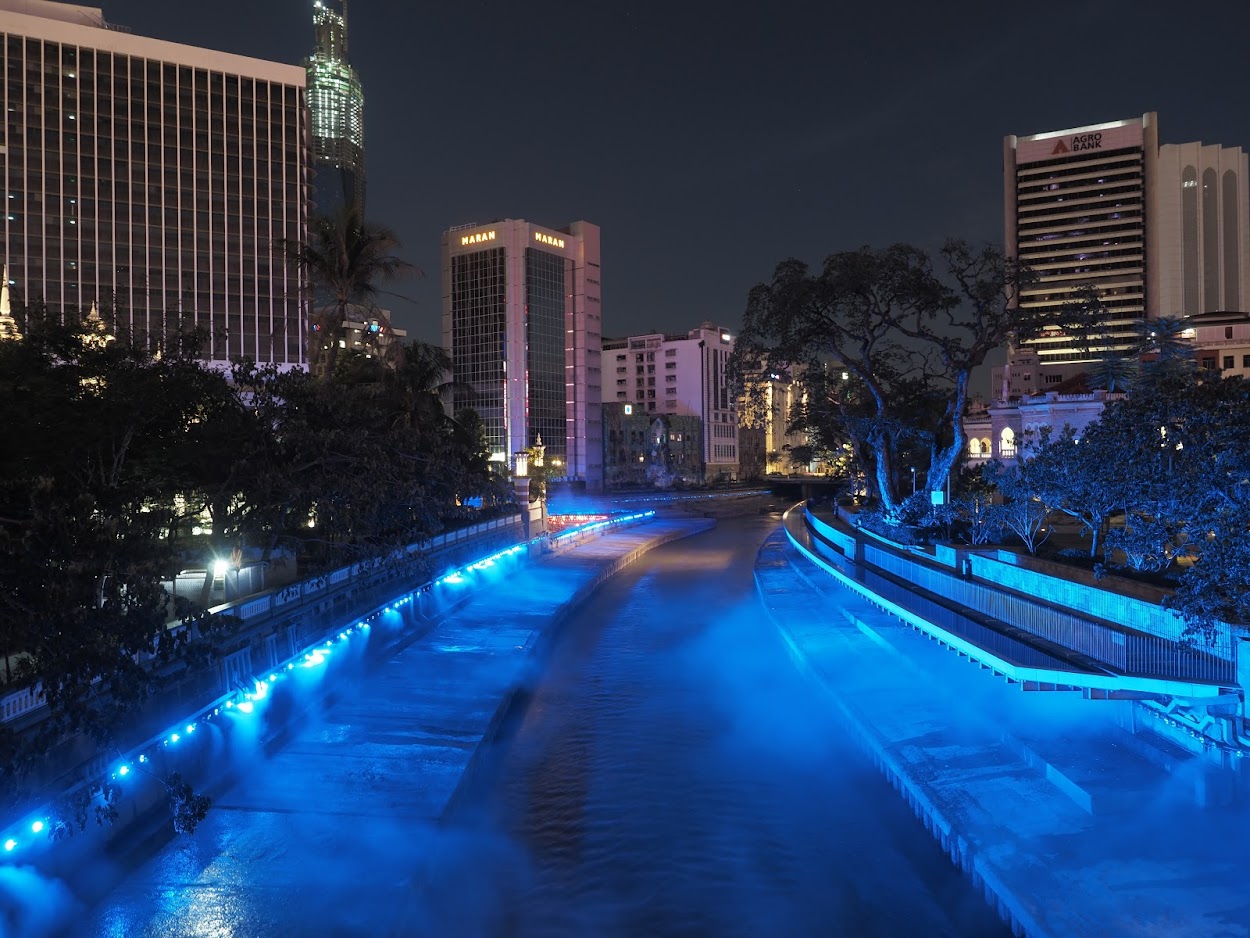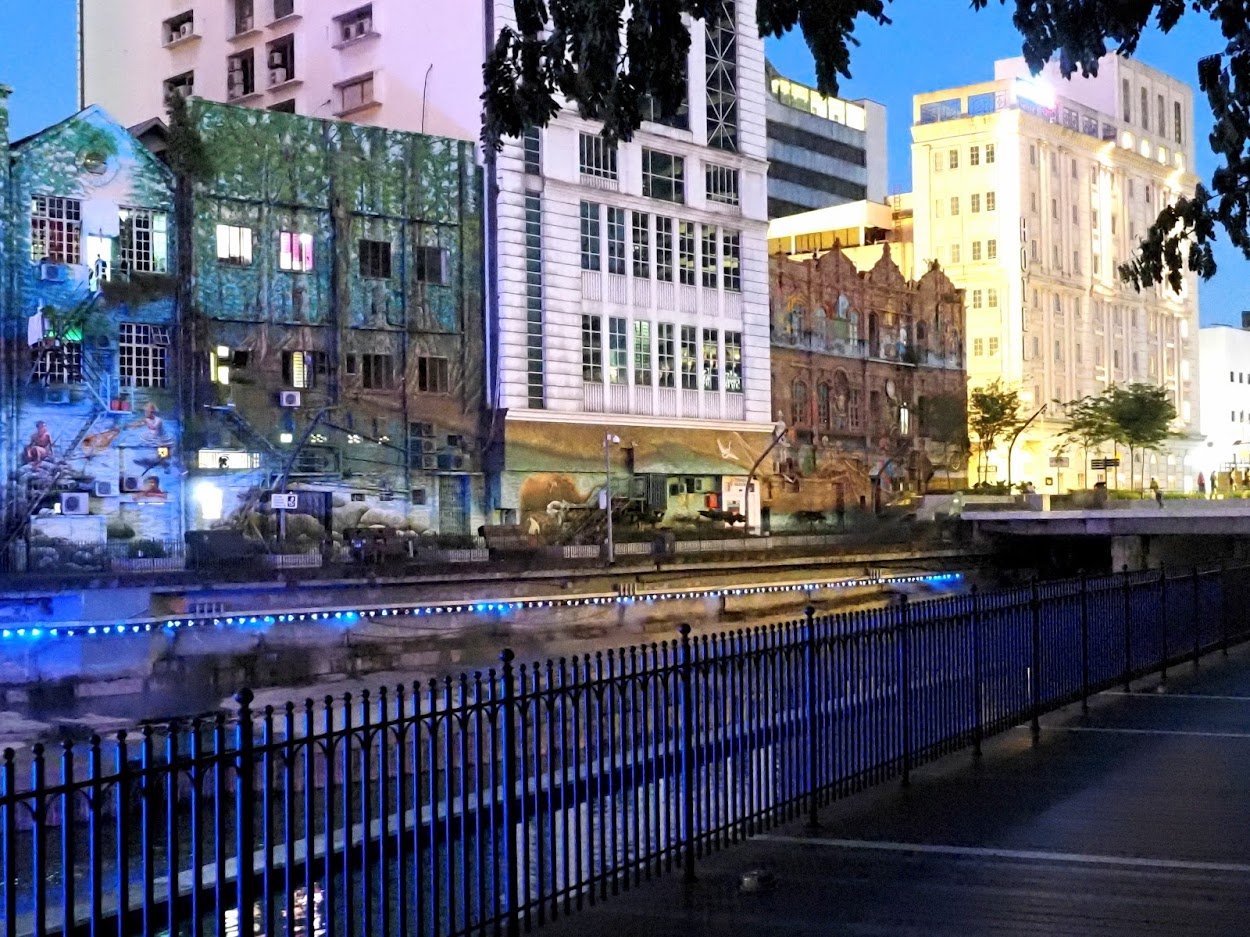Olympus has added a new camera to their OM-D line, the E-M10 Mark IV. I have had a sample review unit on loan for about 2 weeks before the official release of the camera and I have been shooting a lot with it. The E-M10 Mark IV succeeds the E-M10 Mark III as the new advanced entry level OM-D camera from Olympus. I will share my user experience and plenty of fresh sample photographs taken from the E-M10 Mark IV in this review blog entry.
I also have a video review for the E-M10 Mark IV, for those who prefer to watch than read.
DISCLAIMERS
I am an Olympus Visionary, an ambassador to the Olympus brand. The E-M10 Mark IV was on loan from Olympus and shall be returned after reviewing purposes. This is a non-technical review, so there will be no graphs, charts or comparison in numbers. I am sharing my experience as a professional photographer having been shooting extensively with the E-M10 Mark IV for about 2 weeks now. This is also the photography review for the E-M10 Mark IV, I am not a cinematographer thus I am not qualified to review the video performance of the camera. However, I do intend to discuss the video performance for vlogging purposes in the future, separate from this particular article.
I am an Olympus Visionary, an ambassador to the Olympus brand. The E-M10 Mark IV was on loan from Olympus and shall be returned after reviewing purposes. This is a non-technical review, so there will be no graphs, charts or comparison in numbers. I am sharing my experience as a professional photographer having been shooting extensively with the E-M10 Mark IV for about 2 weeks now. This is also the photography review for the E-M10 Mark IV, I am not a cinematographer thus I am not qualified to review the video performance of the camera. However, I do intend to discuss the video performance for vlogging purposes in the future, separate from this particular article.
PRODUCT OVERVIEW
The E-M10 series cameras have always been the entry level Micro Four Thirds camera models from Olympus. It is a stripped down version of the OM-D flagships, excluding the professional and high grade features like weather-sealing, rugged build and advanced shooting features like Pro Capture Mode and High Res Mode. Having said that, do not let this fool you, the E-M10 Mark IV is every bit a capable Olympus camera that can deliver good results.
What has changed from E-M10 Mark III to E-M10 Mark IV?
- Updated image sensor, bump of resolution to 20MP from 16MP
- Improved 5-Axis Image Stabilization in body to 4.5 EV steps compensation from 4 EV steps
- Reworked hand-gripping area for handling
- Tiltable LCD screen that has tilt-down selfie mode, similarly found from E-PL series cameras
- Improved C-AF algorithm for photos and videos
Everything else remained exactly the same from E-M10 Mark III, the imaging processor is Truepic VIII and you can shoot video up to 4K 30p resolution. Also, all the important and unique Olympus features such as Live Time, Live Composite, Time Lapse shooting and Keystone Compensation are still available. I won't dive deep into all the little details, for full product descriptions you can go to Olympus' official page here (click).
 |
| The design is almost the same with the predecessor, E-M10 Mark III, with only very minor changes. |
 |
| The most telling difference is the number "IV" lettering at the front of the camera, which is obvious and hard to miss. |
 |
| Modified and improved hand-gripping area design for better camera handling. |
 |
| The LCD panel and the EVF are the same from E-M10 Mark III, but the LCD screen has selfie tilt-down capability. |
 |
| The advanced features such as Live Composite, Keystone Compensation, Time Lapse, are all still available. |
 |
| A welcome bump of resolution from 16MP to 20MP in the updated sensor inside E-M10 Mark IV. |
The E-M10 Mark IV has very similar design to E-M10 Mark III, with minor tweaks only. E-M10 Mark IV has an obvious lettering "IV" at the front of the camera, which makes it very hard to miss. The OM-D design has been consistent for all Olympus OM-D cameras, with the middle hump for EVF that looks like an SLR design, and overall the camera has a vintage and classic look, which Olympus derived from their traditional OM series film cameras. The placements of the buttons and dials are exactly the same too.
The LCD panel and EVF are also the same from the E-M10 Mark III, but the LCD screen in E-M10 Mark IV can now be used for selfie, being tilted down. I personally prefer shooting with a tiltable screen over swivel articulating screen, simply because it requires less turning and moving of the screen to low and high angle positions - both critical for grabbing quick shots especially when doing fast action photography (street, events, weddings). I can understand that the video crowd would prefer swivel screen, but as a photographer, the tilting screen makes a lot more sense and is more practical in many situations.
There are two ports - Micro USB (why no USB C whyyyyyy Olympus whyyy??) which is also USB charging capable and Micro HDMI out. Unfortunately, much to many video-centric reviewer's grief, there is no microphone jack input.
The big advantage of E-M10 series cameras has always been the compact and light build, while offering a list of advanced shooting features which separates the E-M10 from other manufacturer's entry level offerings.
The camera is made of plastic, and that is to be expected from an entry level camera. The plastic build has some advantages, the weight is further shaved and the camera only weighs 383g with battery and SD card included. The E-M10 Mark IV feels solid in hand, there are no creaking parts, everything felt very well put together and the camera feels dense (no hollow or loose parts). The build quality is very good. Perhaps not as rugged or robust as their higher level OM-D cameras like the E-M1 series, but the quality is very close to E-M5 Mark III.
HANDLING
Olympus has revised their gripping area for the E-M10 Mark IV. The top part of the hand-grip has been recessed and made room for the middle finger to rest more comfortably and securely on it. I find this small change of grip design making a huge difference in handling, it helps for such a small camera. I don't see this benefiting larger bodies like E-M1 Mark III that has a pistol like grip, and you wrap all your fingers and almost entire palm on the camera grip. For small cameras like E-M10 Mark IV, that top indent makes perfect sense, and handling was very good.
I was shooting with Olympus M.Zuiko 12-40mm F2.8 PRO for the entire day with no issue. I did not feel any strain on my wrist, or any other parts of my body. Handling was comfortable and I have no issue using the E-M10 Mark IV for long shooting durations. However, it is also important to note that due to the compact build and lighter weight, the E-M10 Mark IV is best paired with smaller and lighter lenses from Olympus. If you intend to fit a much larger lens, say the 12-100mm PRO or 40-150mm PRO, the combination will definitely get front heavy and imbalanced. Thankfully Olympus does have plenty of compact lenses to choose from.
CAMERA IN USE
Generally the E-M10 Mark IV felt very snappy and I found myself using it just like I was shooting with higher level OM-D cameras (eg E-M5 Mark III). Camera operations was smooth and lag-free, every adjustments, turn of dials, navigation of menu and settings were quick and lag-free. The camera was super-responsive. I found no delay when starting up the camera or powering down the camera. Shot to shot time was also very fast, I was shooting JPEG + RAW and I did not notice any slow down. I used a Lexar 64GB UHS-II 1000x SD card. I did not shoot in burst sequential mode however, but overall I never once felt the camera slowed down.
All images were shot with Olympus OM-D E-M10 Mark IV with M.Zuiko 12-40mm F2.8 PRO lens. Images were taken in RAW and post-processed (only slight tweaks) in Olympus Workspace.
For your pixel-peeping fetish, you may find full size resolutions (mostly uncropped images) in my online gallery here (click).
 |
| ƒ/7.11/1326mmISO200 Signature Olympus color rendering, very pleasing and natural, not over the top, yet looking punchy and bright. |
 |
| Crop from previous image Plenty of fine details, super sharp for a 20MP image sensor. |
 |
| ƒ/81/1326mmISO200 |
 | ||
ƒ/51/160038mmISO200
|
 |
| Crop from previous image The camera can resolve plenty of good fine details and contrast, rendering realistic looking results. |
 |
| ƒ/3.51/10024mmISO200 |
 |
| ƒ/4.51/400031mmISO500 |
 |
| ƒ/5.61/3012mmISO200 |
 |
| ƒ/5.61/100012mmISO200 |
UPDATED 20MP IMAGE SENSOR
Olympus did not give any official information on this, but I have a strong suspicion that the 20MP image sensor used in the E-M10 Mark IV is the same one found in PEN-F. I could be wrong, but here are my reasons for making such observations.
The newer 20MP sensor used in E-M1 Mark III and E-M5 Mark III (also E-M1 Mark II and E-M1X) has a total 20.4MP native resolution and has built in phase detection AF points onto the sensor, to help for C-AF tracking in both stills and video shooting. However, the PEN-F's 20MP sensor is a different one, only having 20.3MP resolution in total (you can look up the Olympus official specifications) and it does not have phase-detection AF capabilities. The E-M10 Mark IV, as reported by the official specifications released by Olympus also has similar 20.3MP resolution image sensor, and does not have phase-detection AF, hence this led me to believe that the image sensor for E-M10 Mark IV is the one used in PEN-F.
This simply means, you get a good bump up in resolution from the previous 16MP image sensor in E-M10 Mark III, and noticeable improvement in terms of dynamic range and high ISO performance. However, the 20.3MP sensor in E-M10 Mark IV (and PEN-F, if my speculation is correct) is not as good as the latest one 20.4MP used in E-M1 Mark III and E-M5 Mark III.
IMAGE QUALITY
Overall, I did notice very similar image output from PEN-F, and when stretching the image parameters to the extremes in harsh dynamic range and low light shooting, the performance does fall slightly short of E-M1 Mark III and E-M5 Mark III.
That aside, the 20MP image sensor in E-M10 Mark IV is still plenty to go around, even for today. I never once found a situation where I wished I had more resolution. I get consistently sharp images, full with fine details and very good contrast. The 12-40mm F2.8 PRO lens does a fine job resolving high quality pixels as captured by the E-M10 Mark IV. I never had any issue with dynamic range, though this is probably the first thing most reviewers would attack a Micro Four Thirds camera on. I have shot in some very harsh lighting conditions, with backlit and plenty of difficult highlight and shadow within the same frame, I notice the E-M10 Mark IV does a great job in balancing the light, and produce results with good dynamic range. The highlight roll off is very pleasant, never clip off too suddenly and the shadow does not dip to complete black, unless of course you over or under expose the shots severely, intentionally.
High ISO performance was also respectable for an entry level cqmera. While not the best Olympus has to offer at the moment (maybe I should do a direct comparison to E-M1 Mark III some time in the future), the camera can shoot comfortably up to ISO3200 with no serious penalty. The details are still well preserved and noise suppression is very good. Perhaps shooting at ISO6400 is stretching too far, but I won't hesitate to use ISO6400 when necessary. It is best to avoid anything higher than that.
Important note: I know that these images (low light, high ISO) may look quite small on screen, but you can find them in my full resolution gallery (link provided earlier). Please don't make complains that you can't judge the image quality from the "tiny" resized images here, go pixel peep till your eyes drop out.
 |
| ƒ/41/1331mmISO1600 |
 |
| ƒ/42s12mmISO200 A torture test for the image stabilization, I can confidently hand-hold wide angle shots down to about 1 second. I can do 2 seconds, with about 50% hit rate. |
 |
| Crop from previous image |
 |
| ƒ/41/512mmISO6400 |
 |
| ISO25600 CROP |
 |
| ISO12800 CROP |
 |
| ISO6400 CROP |
 |
| ƒ/41/1012mmISO3200 |
 |
| ƒ/2.81/212mmISO500 |
 |
| ƒ/2.81/1040mmISO200 |
The one strong feature in E-M10 Mark IV that separates this camera from the rest of entry-level camera herd is the built in 5-Axis image stabilization in body. Olympus claimed the effectiveness of stabilization is good for compensation up to 4.5 EV steps, which is quite impressive, and the best in class. For those of you who have experienced how incredibly reliable and powerful the image stabilization from Olympus truly is, after you have used it, there is no turning back. It just adds the boost of confidence in nailing the shots every time you use an Olympus camera with 5-Axis IS.
From my tests, I find that the effectiveness of the 5-Axis IS to be very similar to E-M10 Mark III (from memory), and I did not have the E-M10 Mark III to compare side by side, but the different of 4.5 vs 4.0 EV steps should not make such a huge and dramatic improvement anyway. I can safely and confidently hand-hold wide angle shots (12mm end from the 12-40mm PRO lens) down to about 1 second shutter speed. At the longer end, medium telephoto range (40mm of the 12-40mm PRO lens) I can hand-hold about half a second shutter speed. Both are incredible results considering this is not a PRO level flagship camera, and should not be expected to outperform the best offering from Olympus at the moment. The E-M10 Mark IV results are a stretch better than what Olympus has promised 4.5 EV steps, I find it closer to about 5 EV steps effectiveness.
AUTOFOCUS
I find the AF performance to be just as fast as the E-M10 Mark III, or E-PL9, but not as the top speed experienced on E-M1 Mark III or E-M1X. The S-AF performance (single-autofocus) is blazing fast, the camera locks focus almost instantaneously without hesitation and the AF is always reliable with high level of critical accuracy. I found myself using the S-AF confidently nailing shots, coming home with extremely high hit rate, and if I did miss the shots it was my own fault.
I won't comment on the C-AF performance, since I do not shoot moving subjects (I don't shoot sports) and for most of the subjects in motion that I do shoot (weddings, street photography, events, live music stage) I can still use the S-AF and get perfectly sharp images, the S-AF is so fast you just click the shutter button almost instantaneously in the midst of action to grab the shot.
Olympus did claim that they have added the Face and Eye detection AF into the E-M10 Mark IV with similar algorithm from E-M1 Mark III, I did test it briefly but I found no way to choose which face for the camera to lock on (if you have more than one face in your frame). E-M1 Mark III gives you the option to quickly select which face by using a shortcut pre-assigned custom button or simply touching the face on the LCD screen, both options missing from E-M10 Mark IV. If you only have one human subject in a frame, then the face/eye detect AF works well, but other than that I find myself more confident moving the focusing point manually to the eye of the person, than rely on the face/eye AF.
It is also worth noting that if you want to do any serious shooting, the AF performance does not match the higher end OM-D models like E-M1 Mark III or E-M1X, and you should aim for those models if AF reliability is critical to you.
BATTERY LIFE
Now this is the strange bit - I went out of the house from morning 9am, shooting all day with plenty of coffee breaks, lunch and dinner breaks (we eat at least 5 times a day in Malaysia) and came home at about 10pm in the evening, I was hoping to kill the battery off so I can safely say how many shots I have taken before the battery died. Unfortunately, the battery had one bar left and was not even blinking red when I got home, and I have shot around 900 images from the full day outing. I can't tell you that you can shoot 900 shots, that is also a subjective number since we all have different shooting styles. I guess the safe estimate is about 500-600 shots per battery charge. Provided you don't do crazy things like chimp after each shot, or transfer out images via WiFi every 10 minutes.
Now this is the strange bit - I went out of the house from morning 9am, shooting all day with plenty of coffee breaks, lunch and dinner breaks (we eat at least 5 times a day in Malaysia) and came home at about 10pm in the evening, I was hoping to kill the battery off so I can safely say how many shots I have taken before the battery died. Unfortunately, the battery had one bar left and was not even blinking red when I got home, and I have shot around 900 images from the full day outing. I can't tell you that you can shoot 900 shots, that is also a subjective number since we all have different shooting styles. I guess the safe estimate is about 500-600 shots per battery charge. Provided you don't do crazy things like chimp after each shot, or transfer out images via WiFi every 10 minutes.
The E-M10 Mark IV uses the same battery and charger as the previous E-M10 series cameras, the battery unit being BLS-50.
 |
| ƒ/4.51/3035mmISO200 |
 |
| ƒ/5.61/3040mmISO200 |
 |
| ƒ/2.81/200024mmISO200 |
 |
| ƒ/41/16040mmISO200 |
 |
| ƒ/3.51/25032mmISO200 |
 |
| ƒ/2.81/6040mmISO200 |
 |
| ƒ/5.61/80014mmISO200 |
 |
| ƒ/2.81/125040mmISO800 |
BEGINNER-FRIENDLY CAMERA FOR PHOTOGRAPHERS
You can clearly see from the design decisions that the Olympus OM-D E-M10 Mark IV was clearly made and targeted toward the photography-centric crowd. The tilt screen was used instead of a swivel-articulating screen. There was no microphone input, and no fancy video features. Olympus did not make any promises about the camera being a vlogging or video-centric camera, it is what it is, though I can easily predict many reviewers bashing Olympus for "crippling" this camera by not having the swivel screen and microphone input.
Here is the thing, if you want a great vlogging solution from Olympus, an OM-D camera with great video output, amazing video stabilization and a host of good video-centric features, the E-M5 Mark III is the answer. The E-M10 Mark IV is definitely a step down from the E-M5 Mark III, there is no doubt in that, and should not be expected to host similar capabilities, else how is Olympus going to sell the E-M5 Mark III? Long story short - if you are in Micro Four Thirds world, which is not lacking of good video-centric cameras when you include Panasonic into the equation, you should definitely look at E-M5 Mark III for a vlogging camera.
As an entry level interchangeable system camera with some room to grow, the E-M10 Mark IV does a lot in such a compact and light package, perfect for travel photographers or day to day casual shooting. It is also great as a street photography camera, having the tilt screen which is more stealthy than a full swivel/articulating screen that makes it very obvious you are taking a photograph.
VIDEO DISCUSSION NEXT
As I mentioned, I am not qualified to review the video aspect of E-M10 Mark IV, since I am very new to video, and the only experience of me making videos is only for my own YouTube channel. You can clearly see how noob I am still in this video world. Instead, I will be sharing my experience as a noob vlogger, or new YouTuber using the E-M10 Mark IV for video, hopefully in my coming articles and videos. The reason I am separating the video discussion out of this blog entry is to make myself clear that I am not the best person to talk about this. So stay tuned for my sharing on experience shooting video with E-M10 Mark IV. I don't want to pretend like I am an expert (when clearly I am not) like a lot of reviewers and YouTubers do.
WHAT I WISH WAS IMPROVED
I seriously miss using the external camera grip attachment as found on the original E-M10 and E-M10 Mark II. It was removed from E-M10 Mark III onward, and that grip would have made a world of difference in improving handling using larger and heavier Micro Four Thirds lenses. I also miss the more extensive customization options in the older E-M10 series, with more custom function buttons, with custom modes. I guess Olympus decided to differentiate their OM-D products more clearly now, indicating the E-M10 series is for entry level crowd, while E-M5 and E-M1 series are for more advanced photographers.
 |
| ƒ/2.81/400040mmISO200 |
 |
| ƒ/51/64040mmISO200 |
 |
| ƒ/4.51/20012mmISO200 |
 |
| ƒ/51/10012mmISO200 |
 |
| ƒ/4.51/16012mmISO200 |
CONCLUSIONS
The Olympus OM-D E-M10 Mark IV is a capable entry level Micro Four Thirds camera that can deliver great results. The images come out sharp with plenty of fine details, good color rendition and respectable dynamic range, with perfectly usable straight out of camera JPEGs. The low light performance may not be something to shout about, but it is not horrible either. The small and light build make this camera really special for photographers looking for a compact travel companion, or a camera to use for casual take-everywhere day to day photography. The E-M10 Mark IV also hosts some advanced capabilities - powerful 5-Axis Image Stabilization, blazing fast autofocus performance and Olympus unique features such as Live Composite. I do find the E-M10 Mark IV to be a step up from E-M10 Mark III when it comes to image quality and overall use experience, but if you are into video and vlogging I suggest going for E-M5 Mark III instead.
E-M10 Mark IV is a great place to start with an Olympus system, if you want a more controls, better performance and overall a higher level camera than the introductory basic PEN E-PL series cameras. However, if your budget permits, I'd suggest stretching it to get the E-M5 Mark III which is a significant upgrade and a better camera in every single aspect, you get a lot more for your money spent.
Please support me and keep this site alive by purchasing from my affiliate link at B&H.














Robin, is this the time to buy a nearly new EM10 MKIII then?
ReplyDeleteIs it worth the extra money?
I'd recommend getting E-M5 Mark III or the E-M10 Mark IV, simply for the 20MP image sensor, and a lot more things that the newer cameras can do.
DeleteHi Robin, I'm reading your blog for many years and I'm a truly admirer of your wonderful photographs. You are doing a great job taking pictures, writing on this webpage, creating you tube materials. I can understand how much work are you doing and it's obviously for anyone how much passion put you here. But... most important... results are wonderful and you deserve our praise. However, if I may, I would like to give you my 2 cents advice: in order to post a complete experience with Olympus gear, maybe it would be a good ideea to start using C-AF and shooting some sports or BIF and start using the video part by experimenting and trying to improve these important areas too. What do you say? For this particular camera, as per my understanding, people mainly wants to see if 1. from usability perspective is still "locked", as 10III?; 2. has a better C-AF?; 3. video footage is cleaner/video AF progressed or not? Wishing you all the very best from a hot Bucharest, Romania.
ReplyDeleteThanks for the kind words mihai. Let me clarify a few things. I did not say I will skip the video part. I simply say I am not fit to review it, but I will discuss the video performance of E-M10 Mark IV in a separate article and video, in case you miss that. Also, I do not shoot with C-AF. For example, people keep requesting me to shoot birds in flight. That is just impossible for me. Give me the best camera in the world with the best C-AF and I won't even have a single usable shot, because that is not what I do, I don't have the skill sets, and I don't enjoy shooting birds flying. It is not something that I want to do either.
DeleteC-AF is a very complicated matter, a lot of reviewers seem to be so quick to judge but when you look at their tests you will start to question whether they know what they are doing or not. For example, Olympus cameras can only successfully activate C-AF if you shoot in burst sequential low, not high. You will see not too long ago, some very reputable and big photography review sites shoot at High sequential burst to test the C-AF, get 50% misses and immediately say the camera has bad C-AF.
I can't pretend to be an expert and give a conclusion if I myself am not qualified to review it with the best of a photographer's abilities. I hope you understand.
Long life m4/3!!!!
ReplyDeleteThanks for the review, capable cam - especially I like how the (problematic) blue light is being rendered in the evening shots.
ReplyDeleteMy pleasure doing the review! Glad you found it useful
DeleteSo on the one hand, the EM10 IV is an entry-level camera. But on the other hand, as you pointed out, "as a photographer, the tilting screen makes a lot more sense and is more practical in many situations." I know that I never use the flip-out screen on my EM1 II.
ReplyDeleteI totally get your frustration, I too wish the E-M1 series have tilt screen instead of swivel, but I guess they have to please the video crowd.
DeleteHi Robin, seeing this review reminded me of the previous EM10 review when you complaint about the wireless flash being removed and Olympus responded soon after by adding the function through firmware update. How about this version?
ReplyDeleteAnd now it's been reported that this camera won't have any Mysets or Custom modes. Too bad, if true!
ReplyDeletenice review Robin... I'm in agreement with you on several points. I still like the tilt screen of my Em10II, the customization, and especially ergonomics with the ECG3 grip. The Em5III, while competent, uses the flippy screen unfortunately for me. And new cameras should almost certainly have toggle focus and usb-c these days.
ReplyDeleteA side note...your macro work always astounds me, alas I don't have the patience for macro work and swapped my 60mm for the Sigma 56mm ;-)
The OM-D E-M10 Mark II was also an entry level camera, but it did have a metal body! That´s why I bought one a few weeks ago at a bargain price, as a step up from my still wonderful Stylus 1s. I do not need 4k video, I do not shoot RAW, so I do not see the point to get a later version of the E-M10. I invested in lenses instead. The Olympus look (JPG,OOC) is unsurpassed for me!
ReplyDeleteerr..no insect shots....?
ReplyDeleteActually this EM10 looks more appealing than the latest EM5: Better grip, lighter, AF-C looks good enough for casual video, compact tilt screen !
ReplyDeleteIt's hard to justify the price difference with the EM5, which mainly has"only" weather sealing and hybrid AF and a few more buttons
Despite the beginner/amateur targeting with the simplified shortcuts and stuff, it still looks very attracting as a second camera even for experts
Hi Robin: Thanks for this review. Do you have any thoughts on the expected shutter life of the OM-D EM10 Mark IV? I have a Mark II that I'm happy with. I'd like the 20MP sensor of the Mark IV. But I am somewhat concerned about the shutter life of the entry-level OM-D EM10 series. (I also use an Olympus E-PL9 that's a joy to play with.) Please let me know, and thanks again.
ReplyDelete